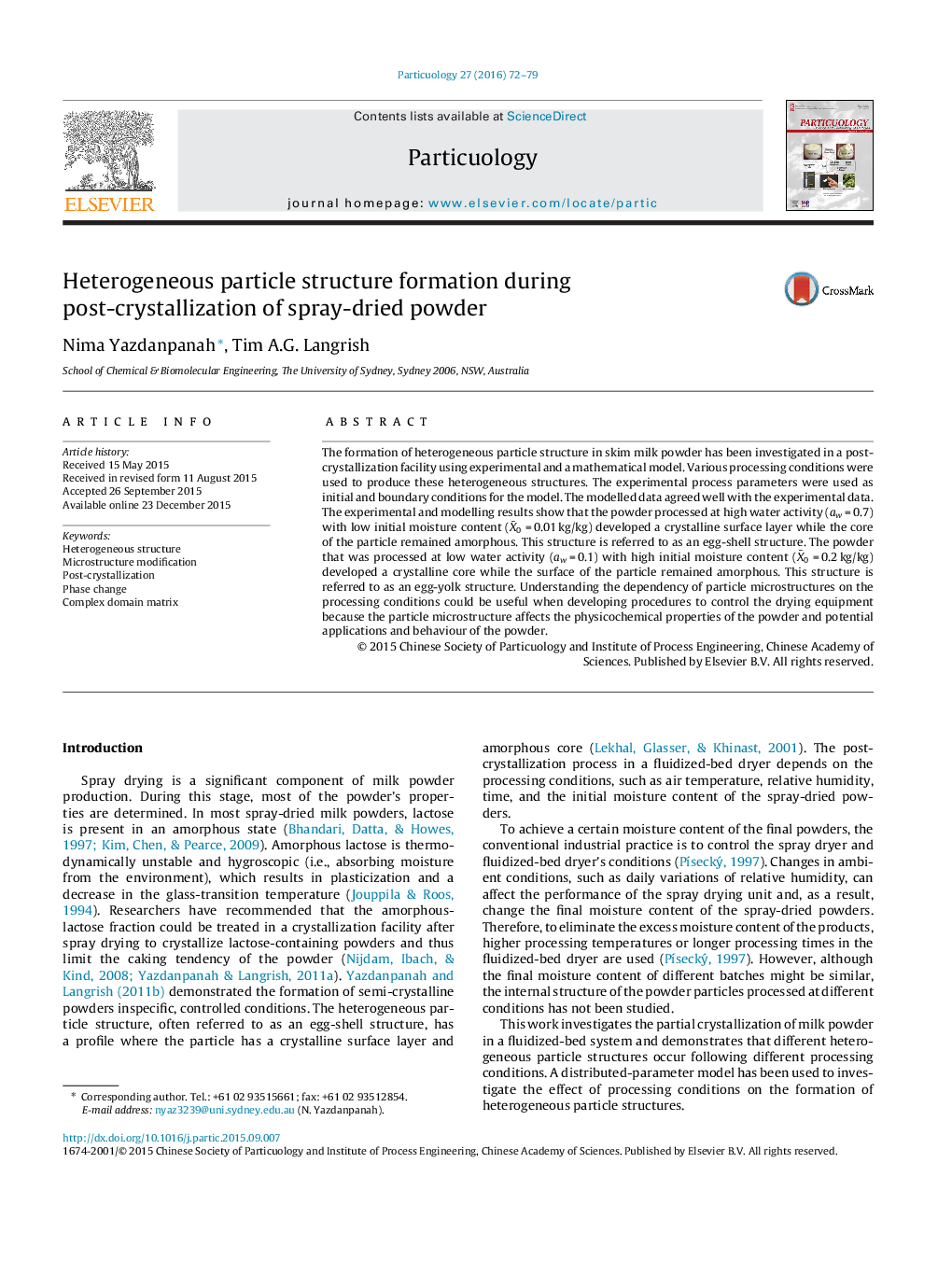| کد مقاله | کد نشریه | سال انتشار | مقاله انگلیسی | نسخه تمام متن |
|---|---|---|---|---|
| 671744 | 1459190 | 2016 | 8 صفحه PDF | دانلود رایگان |
• Changes in particle structure of milk powder during post-crystallization was investigated.
• The sorption and desorption of moisture into or from the surface layer played a significant role.
• A multi-component diffusion model was used to mimic experimental observations.
• Two types of particle structures were observed depending on post-crystallization conditions.
• Model predicted particle structures agreed qualitatively with experimental data.
The formation of heterogeneous particle structure in skim milk powder has been investigated in a post-crystallization facility using experimental and a mathematical model. Various processing conditions were used to produce these heterogeneous structures. The experimental process parameters were used as initial and boundary conditions for the model. The modelled data agreed well with the experimental data. The experimental and modelling results show that the powder processed at high water activity (aw = 0.7) with low initial moisture content (X¯0 = 0.01 kg/kg) developed a crystalline surface layer while the core of the particle remained amorphous. This structure is referred to as an egg-shell structure. The powder that was processed at low water activity (aw = 0.1) with high initial moisture content (X¯0 = 0.2 kg/kg) developed a crystalline core while the surface of the particle remained amorphous. This structure is referred to as an egg-yolk structure. Understanding the dependency of particle microstructures on the processing conditions could be useful when developing procedures to control the drying equipment because the particle microstructure affects the physicochemical properties of the powder and potential applications and behaviour of the powder.
Figure optionsDownload as PowerPoint slide
Journal: Particuology - Volume 27, August 2016, Pages 72–79
